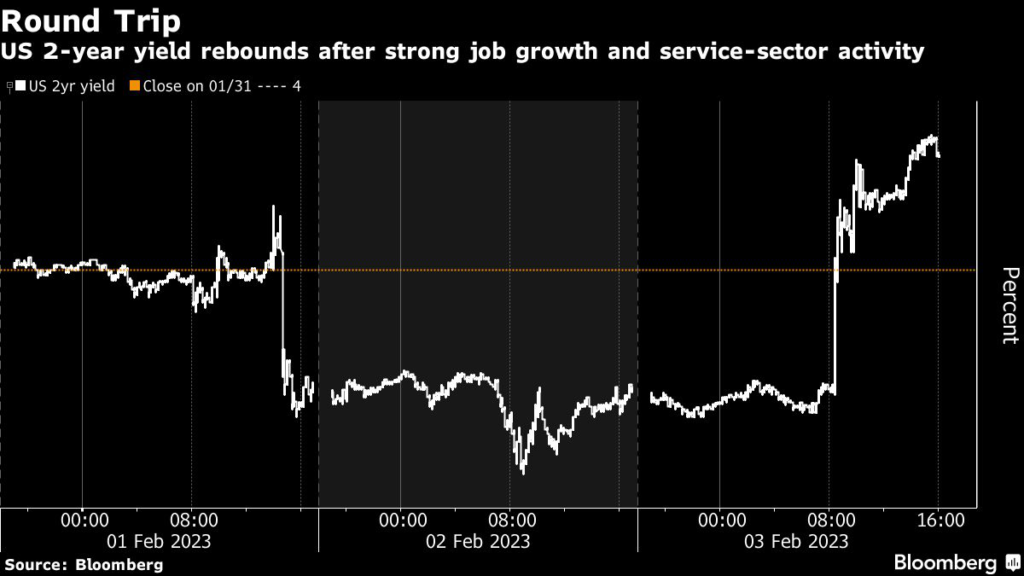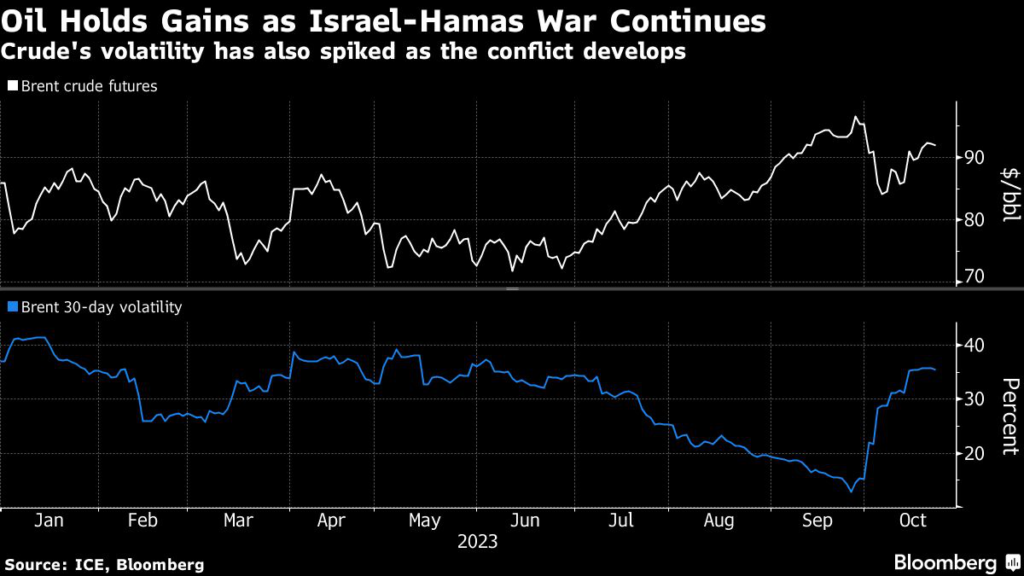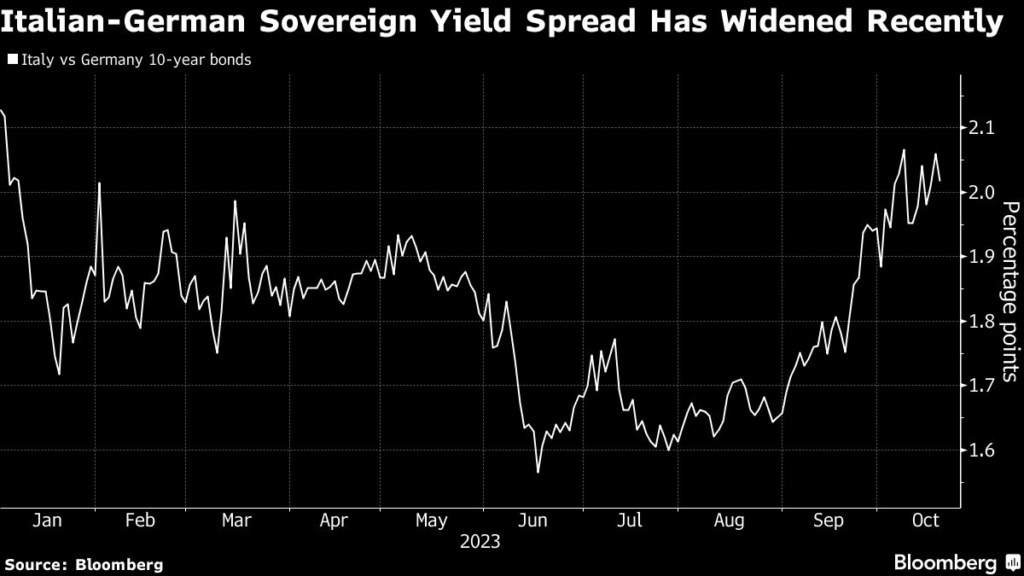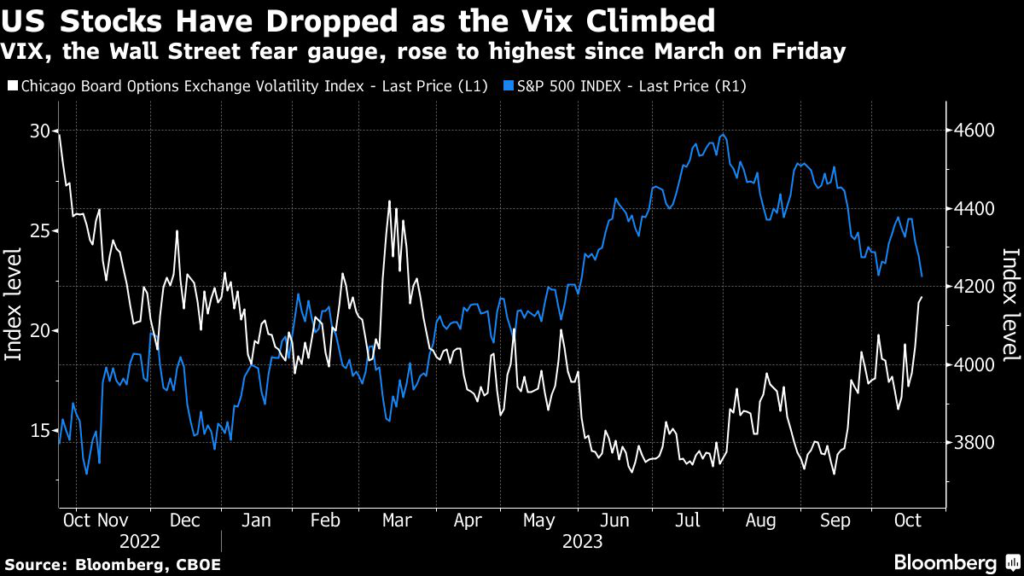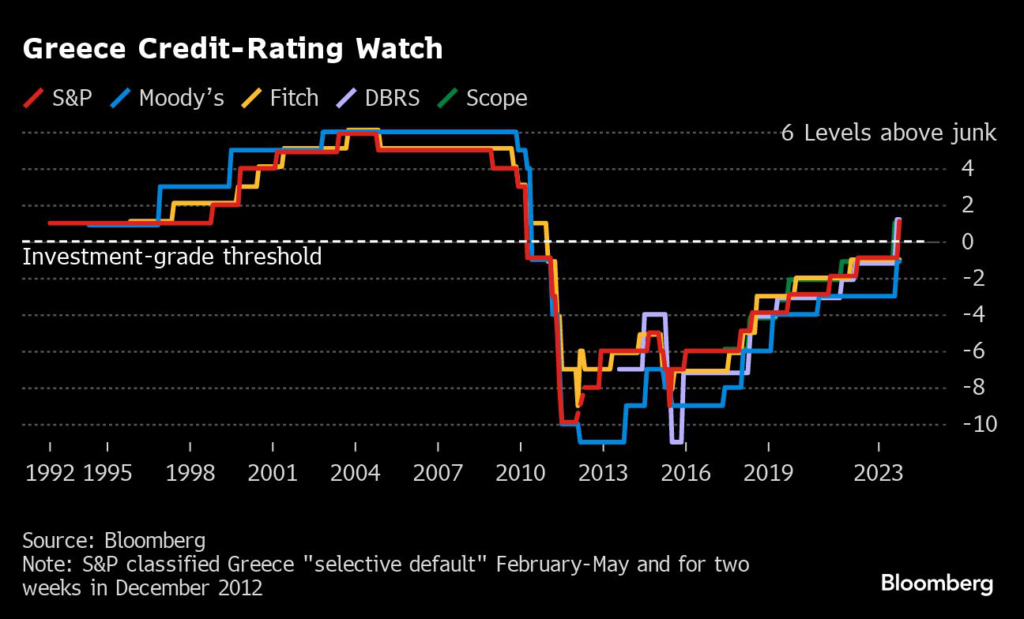(Bloomberg) — US government bonds slumped Friday as stronger-than-expected job creation and service-sector activity undermined wagers on a recession that will force the Federal Reserve to cut interest rates by year-end.
(Bloomberg) — US government bonds slumped Friday as stronger-than-expected job creation and service-sector activity undermined wagers on a recession that will force the Federal Reserve to cut interest rates by year-end.
The selloff, which lifted short-maturity yields by more than 20 basis points, left the market little changed on the week as it erased gains that accumulated after the Fed’s latest rate increase on Wednesday. Investors interpreted Chair Jerome Powell’s comments that day as consistent with a bullish outlook, even as Powell also said more increases were likely and cuts this year were not.
The two-year note’s yield, more sensitive than longer maturities to Fed policy moves, rose as much as 21 basis points to 4.315%, marking a fresh session high late in New York. Thursday’s low of 4.03% was last seen in October. The Fed, battling elevated inflation, raised its target range for overnight lending rates a quarter point to 4.5%-4.75% this week.
“Numbers like this make it difficult to stay at the yield levels we have witnessed this week, and it calls into question a two-year near 4% when the Fed is still raising rates,” said Kevin Flanagan, head of fixed-income strategy at Wisdom Tree Investments. “This report was solid across the board.”
The bulk of Friday’s increase in yields occurred in the minutes after the January employment report showed 517,000 jobs were created, more than double the median forecast of 188,000. Wage gains moderated to a 4.4% pace over the past year with the unemployment rate falling more than forecast to 3.4%.
Yields increased further after the ISM Services Index surged out of contractionary territory to 55.2 in January, versus a median estimate of 50.5.
The rise in short-term yields corresponded to a hawkish repricing of swap contracts indicating the anticipated path of Fed policy. The expected peak in June rose to a session high of 5.046%, having traded below 4.90% earlier this week. The December contract jumped as much as 25.5 basis points to 4.662%, trimming expectations for rate cuts after the peak.
“There is only so much Powell can say to push back on the divergence between markets and the Fed,” said John Bellows, portfolio manager at Western Asset Management Co. “Bond investors are looking at a scenarios where the Fed does cut rates due to falling inflation and weakening growth.”
Powell after Wednesday’s rate increase said policymakers foresee raising rates “a couple of more” times, and that rate cuts this year are unlikely if the economy evolves as they expect. The market rallied anyway, putting more weight on his statement acknowledging “the disinflationary process now getting under way.”
The market moved back in the direction of tighter policy after Friday’s data with the front end and swaps touching session highs when a Fed official reaffirmed the central bank’s projections for a peak rate of 5.1% were likely. San Francisco Fed President Mary Daly told Fox news that their December dot plot estimate was still a good indicator for rate policy and that she is prepared to do more if needed.
Swaps for the March and May Fed meetings priced in a combined 41 basis points of hikes, up from 32 basis points, representing a greater than 50% chance a there will be quarter-point increases in both months.
The 10-year Treasury yield rose 16 basis points to 3.55%, before easing slightly and was little changed on the week after falling to 3.33% on Thursday. Lower yields on longer-maturity Treasuries reflect the view that economic conditions will weaken in the coming months.
Powell is slated to speak on Tuesday, an opportunity to further challenge the market’s outlook for rate cuts.
“The Fed has committed to increments of 25-basis-point moves and that won’t change,” said Gregory Faranello, head of US rates trading and strategy for AmeriVet Securities. The data “helps reconcile the divergence between market pricing and Fed speak.”
–With assistance from Edward Bolingbroke.
(Add updated yields.)
More stories like this are available on bloomberg.com
©2023 Bloomberg L.P.

